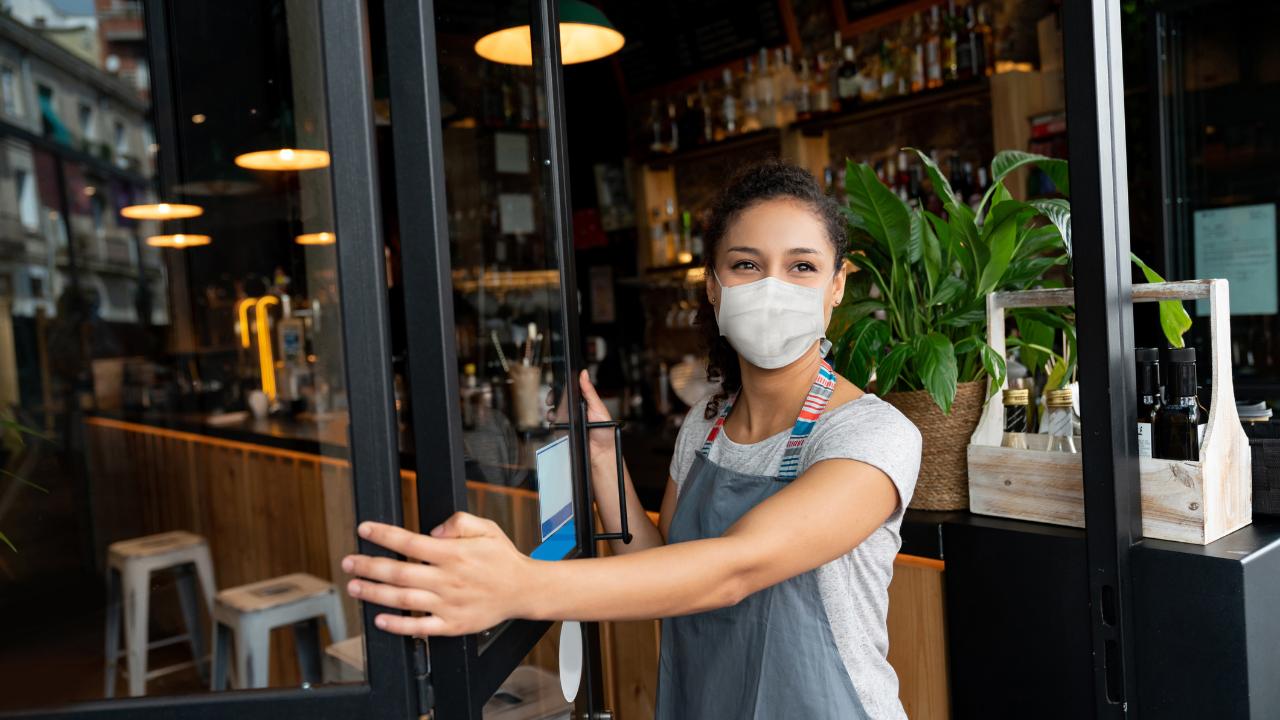What makes bars and restaurants potential COVID-19 hot spots
Indoor dining is particularly dangerous in crowded settings where ventilation, air filtration are poor
Public-health experts and government officials say they are worried bars and restaurants are playing a significant role in increasing Covid-19 case counts across parts of the U.S.
These spaces pose particular challenges for transmission control because of both human behavior and the way the coronavirus spreads most efficiently—indoors through close, prolonged contact without protection. Potentially risky behavior includes loud talking, not wearing masks and drinking alcohol, which can make people less risk-conscious, scientists said.
To limit transmission, public-health experts recommend people stay 6 feet apart, wear masks, practice good hand hygiene and avoid touching their faces.
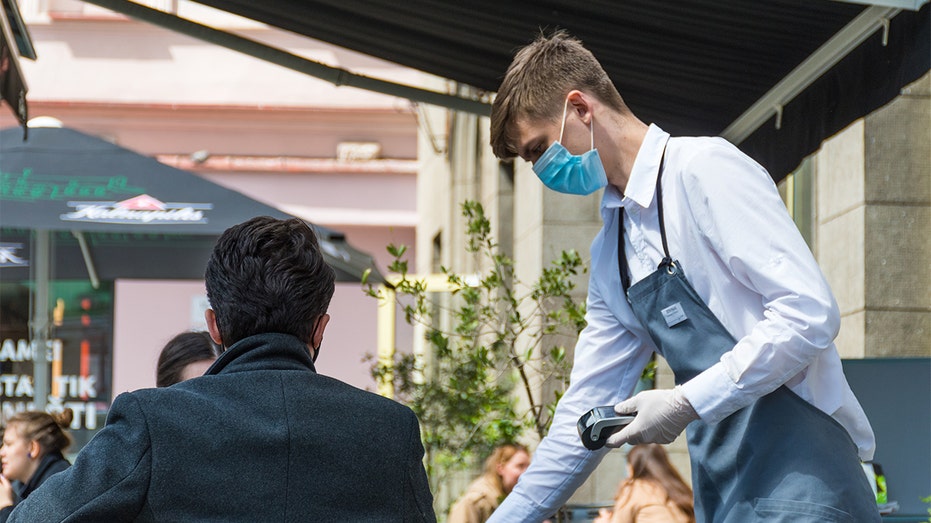
Waiter with a mask and gloves and client at the table of an outdoor bar (iStock)
“It’s much harder to do those four things in a bar or restaurant than in a workplace,” said Lisa Lee, an infectious-disease epidemiologist and associate vice president at Virginia Tech. In work and office settings, it can be easier to socially distance, control who is present and wear masks continuously, plus people aren’t normally drinking, she said. “Generally, office work will be much less risky than a bar kind of situation.”
At least 138 new cases of Covid-19 were recently traced back to a bar in East Lansing, Mich., according to Ingham County Health Officer Linda Vail. Based on case investigations and contact tracing, health officials found that as of July 1, 119 of those cases were people who contracted the virus while at the bar. The other 19 were secondary infections—people who were infected by someone who caught the disease at the bar.
RESTAURANTS IN NYC WILL TAKE LONGER TO BOUNCE BACK: DANNY MEYER
The bar’s owners told Ms. Vail that they were operating at 45% capacity, but video on social media showed many patrons lined up outside were clustering together, without masks. Ms. Vail said her office got complaints of overcrowding and inconsistent mask-wearing by staff inside; many patrons weren’t wearing masks inside, some complaints said.
Some state and local governments are winding back reopening plans and renewing restrictions on bars, restaurants, movie theaters, zoos and museums after seeing record numbers of daily coronavirus infections. Colorado Gov. Jared Polis ordered bars and nightclubs to stop in-person service. Texas Gov. Greg Abbott said the state’s coronavirus crisis was driven in part by people congregating in bars. He closed bars and capped restaurant capacity at 50%. In California, where cases are also rising, Gov. Gavin Newsom on Wednesday ordered restaurants to close for indoor dining and shut down bars in much of the state.
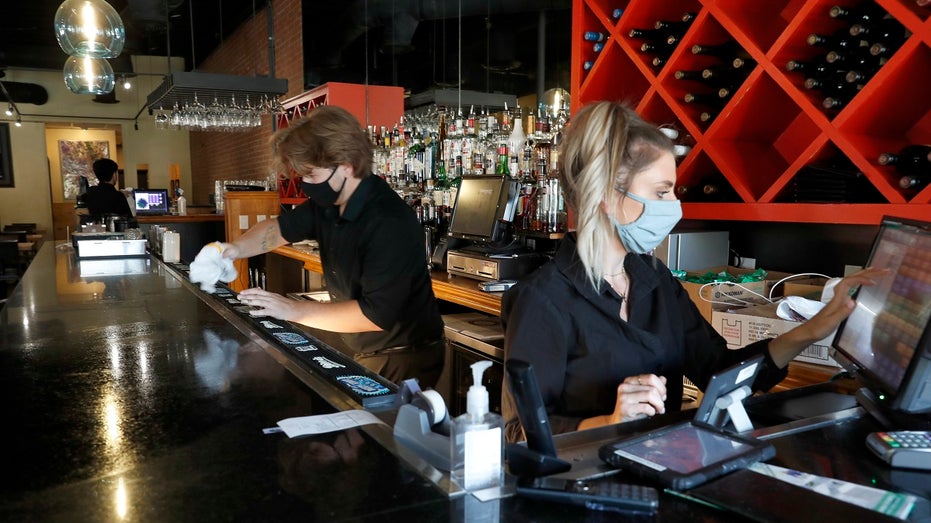
Deep Sushi restaurant employees Jordan Arrowood, left, cleans the bar top as Carrie Souza enters an order at the sushi restaurant. (AP Photo/Tony Gutierrez)
In New York City, restaurants are open for dining, but can only serve patrons outdoors, where transmission risk is lower. Air flow dilutes the amount of virus hanging around.
“We have to think about this in terms of relative risk. There’s no absolutes,” said Thomas Russo, professor and chief of infectious disease at the Jacobs School of Medicine and Biomedical Sciences at the University of Buffalo.
There is a general pecking order to risk in dining out, he said. The safest route is simply getting food through a drive-through or takeout. Outdoor dining comes next, with caveats: Tables need to be spaced out, and the farther the better. Least safe is dining indoors at a restaurant.
YELP ASKS DINERS TO BE MORE 'EMPATHETIC' WITH RESTAURANT REVIEWS
This echoes the Centers for Disease Control and Prevention recommendations, which note that drive-through, delivery, takeout and curbside pickup carried the lowest risk of transmission because they limited the number and duration of interactions among potentially infected individuals. On-site dining, indoors and outdoors, represented the highest risk if capacity wasn’t reduced and tables weren’t spaced at least 6 feet apart.
Indoor dining is particularly dangerous in crowded settings where ventilation and air filtration are poor, experts say, because viral particles can build up in the air. In January, an infected diner who wasn’t yet symptomatic transmitted the virus to five others while eating in a restaurant in Guangzhou, China. Some researchers looking at the case noted that ventilation was poor. They hypothesized that aerosolized virus from the patient’s breathing or speaking built up in the air over time, while strong airflow from an air-conditioning unit helped recirculate particles.

People sit outside Suprema restaurant in the West Village as New York City moves into Phase 2 of re-opening. (Photo by Noam Galai/Getty Images)
Even the safer option of outdoor dining has risks, experts say. Viral particles dissipate more outdoors, lowering the risk of coming into contact with enough virus to get infected. On a population level, being outdoors lowers the risk of a superspreader event. But on an individual level, experts say, if someone is outside and sitting or standing next to an infectious person, there isn’t as much dilution. The likelihood of breathing in what they are breathing out is high, especially if they aren’t wearing masks and are talking and sharing food for a prolonged period.
“That creates the greatest risk for a transmission,” said Rachael Jones, a University of Utah occupational-health and safety expert.
CHICK-FIL-A NAMED TOP RESTAURANT IN CUSTOMER SATISFACTION FOR 6TH YEAR A ROW
In crowded urban settings like New York City, tables might be crammed together on a sidewalk, exposing people to diners outside their own party. “It’s difficult to maintain separation,” Dr. Jones said. “You can’t wear a mask while you eat.”
Bars are “logarithmically worse” than restaurants, Dr. Russo said. People in bars tend to be clustered together, he said, and are more likely to be moving around. That means one person who has the virus can spread it to many more than if the individual was seated at a table eating a meal.
Another thing to keep in mind, infectious-disease experts said: When people drink, they become more relaxed and sometimes their risk tolerance is higher. Even if they start off well-intentioned, wearing masks and social distancing, they are likely to be more lax about those things as the drinks progress. People in bars are also more likely to shout, spraying respiratory droplets into the air, the experts said.
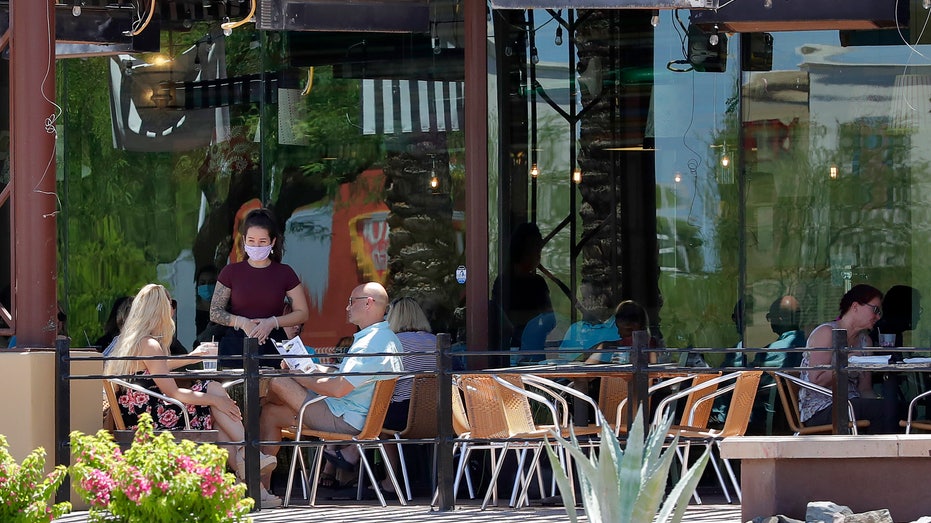
Guests dine in-house at a restaurant in Phoenix. (AP Photo/Matt York,File)
Transmission among younger people, who tend to experience a milder form of Covid-19, is on the rise, in states including Florida.
“I think it’s important for us to get the younger people to understand that it’s imperative that they take this seriously,” said Charlie Latham, mayor of Jacksonville Beach, Fla. He said the city didn’t see an appreciable increase in cases when restaurants reopened at 25% capacity and then expanded to 50%, but did experience one when bars reopened. As of June 26, Florida bars can’t sell alcohol for consumption on-site.
New York City has delayed the start of indoor dining, citing concerns over the spread of coronavirus around the country. On Monday, Mayor Bill de Blasio cited the East Lansing situation, as well as case clusters in Texas and Florida that could be tied back to bars and restaurants, as reason for concern. “We cannot go ahead at this point in time with indoor dining in New York City,” Mr. de Blasio said later in the week.
SHAKE SHACK RETURNS PPP SMALL BUSINESS LOAN THESE RESTAURANTS COULDN'T GET
The National Restaurant Association has issued reopening guidelines based on CDC recommendations, encouraging the use of face coverings for employees, socially-distanced seating, mobile payments and limits on the number of employees in break rooms. Temperature checks for staff are at management’s discretion.
“We ask all of our customers to help us keep our employees and their fellow diners safe by following all of the existing guidelines,” a spokesperson said.
While there are ways to make dining-out safer, there will always be some level of risk around other people, said Benjamin Chapman, professor and food-safety specialist at North Carolina State University, who has worked with state and industry officials to develop a best-practices training program for restaurants looking to reopen.
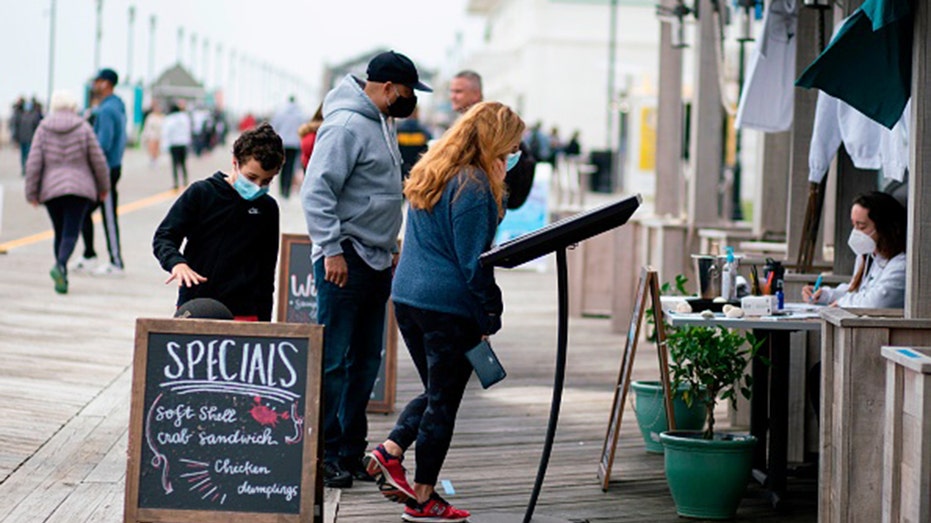
A woman uses a face mask as she sells drinks at a bar by the boardwalk in Asbury Park, New Jersey on May 24, 2020. (KENA BETANCUR/AFP via Getty Images)
He and other experts say restaurants should limit the number of patrons, move seating outdoors if possible, space customers apart and require staff and guests to wear face coverings. Restaurants also should enforce distancing and mask-wearing among people waiting in line, they say.
Servers should minimize interactions with patrons, Dr. Chapman said. That could mean using mobile ordering and having patrons pick up food from a counter, he said.
In Honolulu, Joey and Yana Cabell reopened their seaside restaurant for dine-in service in early June. Employees wear masks and gloves. Fewer staff frequent tables to cut down on interactions. Most of the dining room is well ventilated by natural air flowing through open floor-to-ceiling doors, Ms. Cabell said. The owners have installed partitions for booths and spread out seating. They are encouraging customers to make reservations to reduce crowding and have instituted mandatory temperature checks for employees.
GET FOX BUSINESS ON THE GO BY CLICKING HERE
“We want people to feel as comfortable as possible in these strange times,” said Ms. Cabell, 56, a Covid-19 survivor. “There still are so many unknowns.”
Contact tracing will play a big part in dictating the pace of reopening restaurants, bars and other businesses, epidemiologists and infectious-disease experts said. As states reopen, it is critical to monitor the number of new infections and hospitalizations and re-evaluate which businesses can remain open and which should cut back, they said.
“The more we reopen, each increment—each thing you do—does increase the risk,” said Lisa Winston, vice chief for inpatient medical services and an epidemiologist at Zuckerberg San Francisco General Hospital, who works closely with the local health department. “As with most things, it’s a balance.”




















